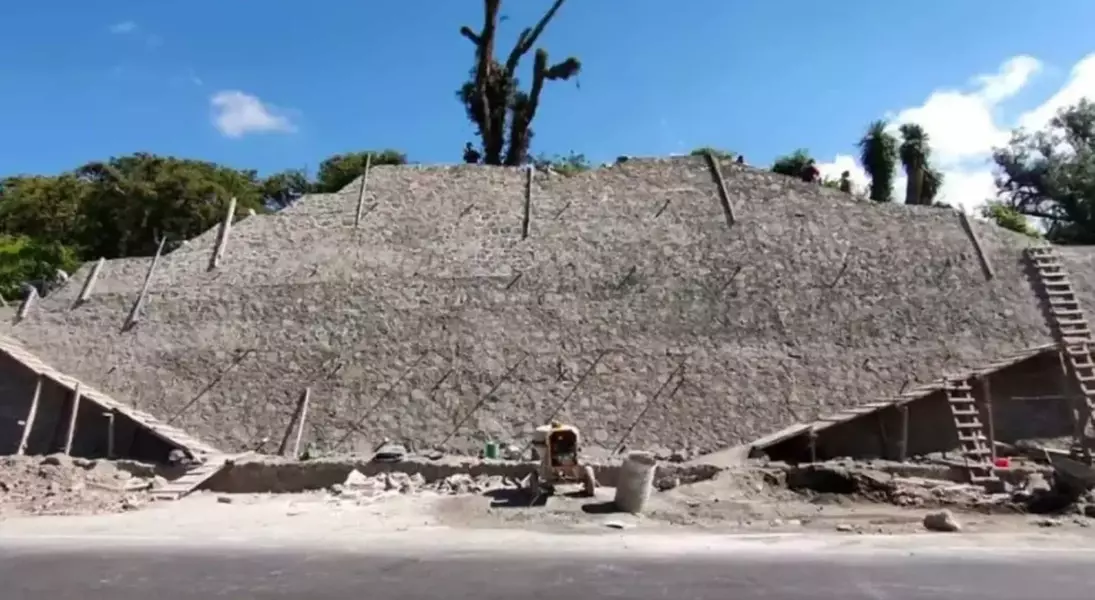In June 2024, during routine roadwork on the Pachuca-Huejutla highway near San Miguel Metzquititlán in the Sierra Alta region of Hidalgo, Mexico, a truly astonishing discovery was made. A 1,375-year-old pyramid, known as Structure 1, was unearthed as workers expanded the highway, halting construction to allow archaeologists to begin their excavation. This find has not only revealed a magnificent pyramid but also a trove of artifacts that offer brand new insights into the ancient Metzca lordship, a multiethnic society that flourished in the region between 650 and 950 CE.
Uncovering the Mysteries of an Ancient Civilization
Monumental Discovery: Unveiling the Pyramid and Its Artifacts
When archaeologists embarked on their excavation, they realized that the pyramid was just one part of a much larger ceremonial complex. The site encompasses five distinct sectors, with at least ten mounds and a wide variety of artifacts scattered throughout. The Metzca lordship, which thrived during the Epiclassic period (650-950 CE), constructed this pyramid as part of a more extensive urban and ceremonial center, demonstrating their sophisticated architectural and cultural practices.The artifacts recovered from the site are truly invaluable in understanding the daily lives, trade, and cultural practices of the people who once inhabited the region. These findings include:- Over 155 artifacts, such as ceramics, stone tools, and shells.- Evidence of charcoal, charred wood, and lime floors, suggesting both ceremonial and domestic activities.- Ceramic figurines that are likely tied to religious or cultural rituals.- Lithic tools that would have been used for daily tasks.Here is a more detailed breakdown of some key artifacts found:Artifact TypeQuantitySignificanceCeramics60+Likely used in daily life, for ritual offerings, and in food preparation.Lithic Tools50+Tools for daily use, trade, and possibly ceremonial activities.Shells25Used for adornment, trade, or as part of ritual practices.Charcoal and Wood–Indicates the presence of ritual fires and burning ceremonies.Lime Floors–Suggests a unique form of construction and possible ceremonial significance.The Metzca Lordship: Insights into an Ancient Civilization
The discovery of the pyramid and its associated artifacts provides a rare opportunity to gain insights into the Metzca lordship, a culture whose existence has been pieced together through the study of similar sites in the Sierra Alta. This civilization is renowned for its significant contributions to Mesoamerican culture, particularly in the fields of architecture, trade, and art.As archaeologists continue to study the San Miguel site, they are uncovering more and more valuable details about the Metzca society. The pyramid's position and the surrounding artifacts suggest that it was a central focus for ceremonial practices and possibly a hub for elite activities. Researchers are particularly excited about the site's potential to offer insights into the region's complex social and political structures.According to the National Institute of Anthropology and History (INAH), the discovery is of utmost importance: "This archaeological record provides valuable insights into the human occupation of the Sierra Alta region, particularly in the Barranca de Metztitlán area, where historiography traces settlements back 14,000 years." This statement emphasizes the significance of the San Miguel site not only as a discovery related to the Metzca lordship but also as a crucial piece in understanding the long history of human occupation in the region.Preservation Efforts: Protecting a Priceless Discovery
After the initial excavation, immediate preservation efforts were implemented to safeguard the site. A rock masonry wall, measuring 141 feet long, 38 feet high, and 2.6 feet thick, was constructed to stabilize the exposed portions of the pyramid. This protective measure helps prevent further degradation and damage to the site caused by environmental factors.Subsequently, archaeologists reburied the exposed areas and covered them with geotextiles to preserve the materials for future study. This process ensures that the site remains intact for continued research and potential public education in the future.However, like many archaeological projects, budgetary constraints pose a significant challenge. Due to recent cuts to the INAH's budget, the future of the ongoing excavation and study of the San Miguel site is uncertain. The INAH has confirmed that its budget will be reduced by 45% for 2025, which may limit the scope and scale of future research efforts. Despite these challenges, the excavation team remains optimistic about the data already collected and its potential to contribute to broader historical knowledge.A Lasting Legacy: What’s Next for the San Miguel Site
Although a great deal has been learned from the initial excavation, the potential for further discoveries at the San Miguel site is immense. Researchers are utilizing drone-based photogrammetry to map out the entire site in greater detail. These advanced technologies will help identify areas that require further excavation and enable archaeologists to create more accurate reconstructions of the ancient complex.The San Miguel pyramid is just the starting point of a deeper investigation into the Metzca lordship and its role in Mesoamerican history. Archaeologists and historians are eager to uncover more about the social structures, rituals, and trade networks that supported this ancient civilization. As the INAH has stated, "The data generated by this archaeological record will contribute to the understanding of human occupation in the Sierra Alta region of Hidalgo, specifically in the Barranca de Metztitlán area, where, according to historiography, the first settlements date back at least 14,000 years."As research continues, the site is sure to offer new revelations about the long history of human presence in the Sierra Alta region. It is hoped that the ongoing preservation and study of this extraordinary site will provide valuable insights into the culture and legacy of the Metzca lordship and, more broadly, contribute to our understanding of ancient Mesoamerican societies.
